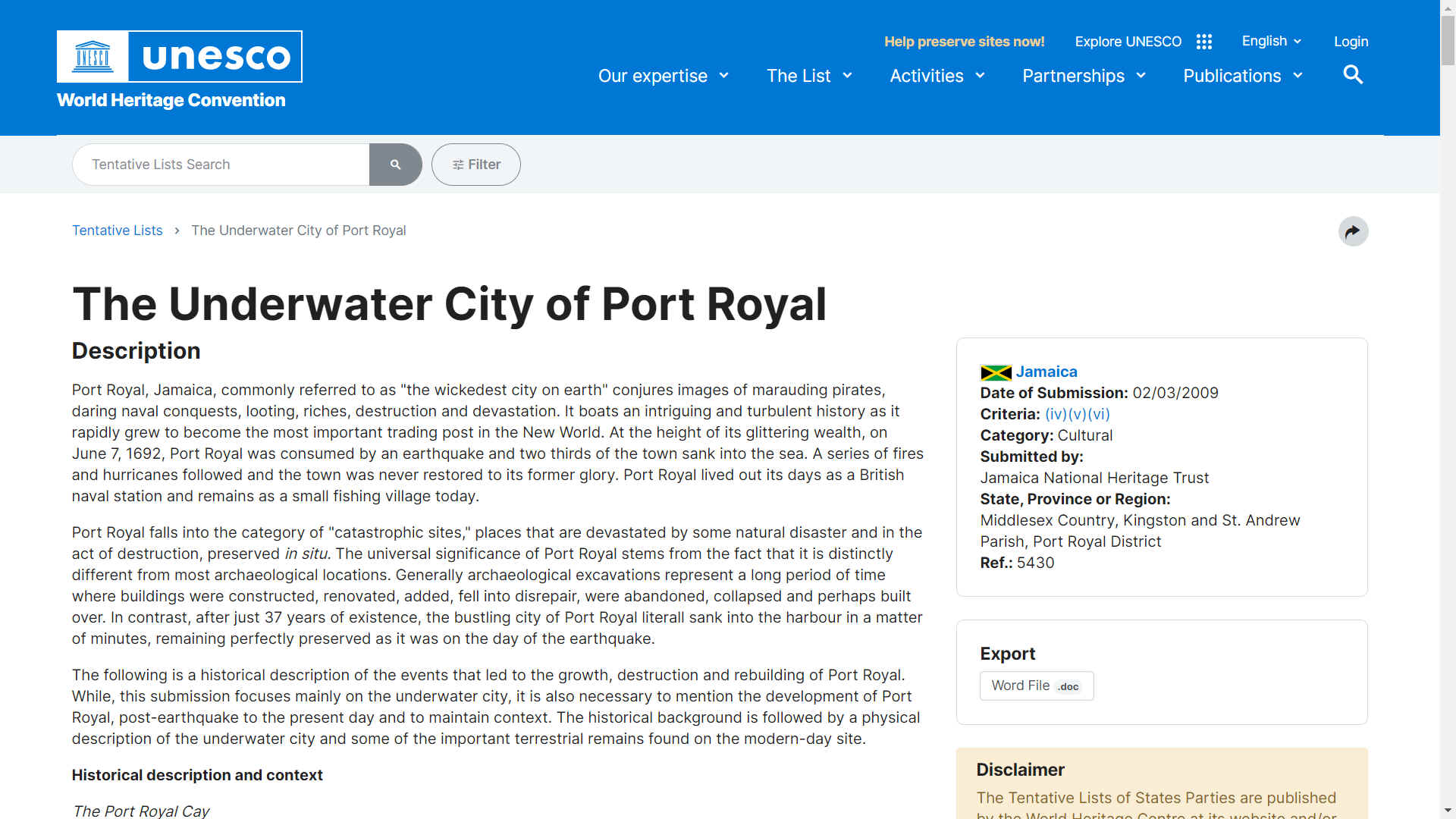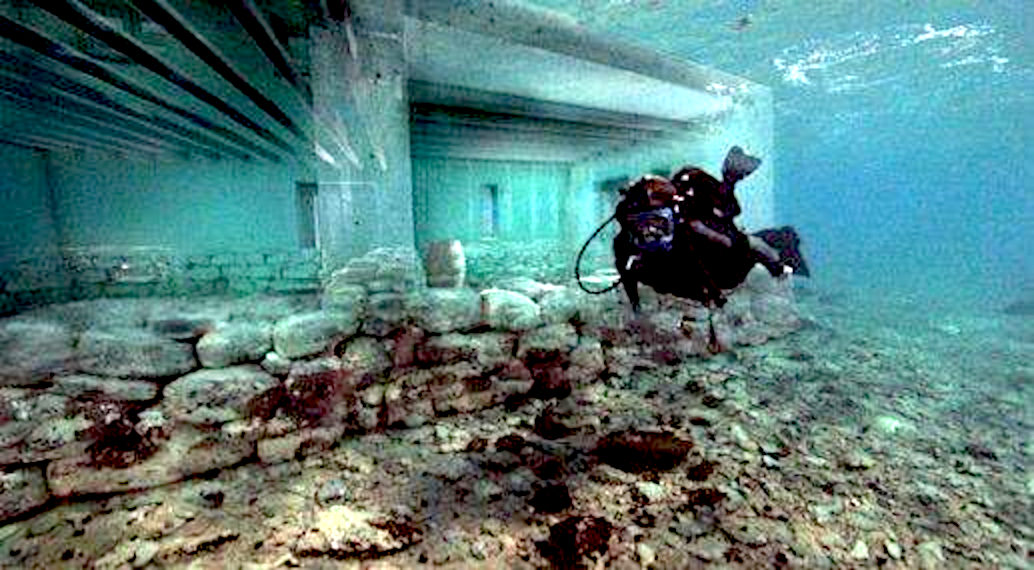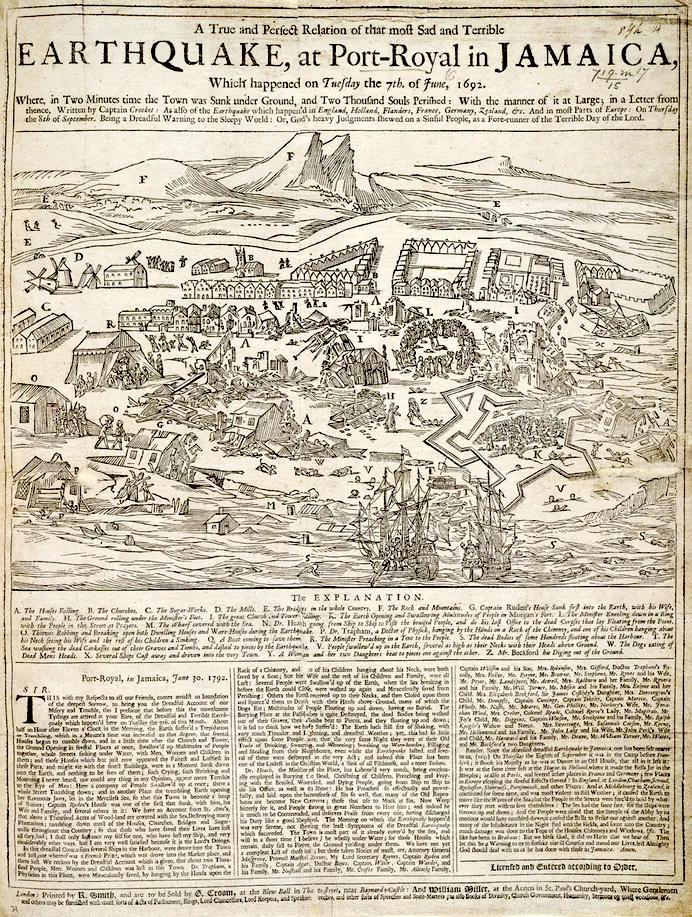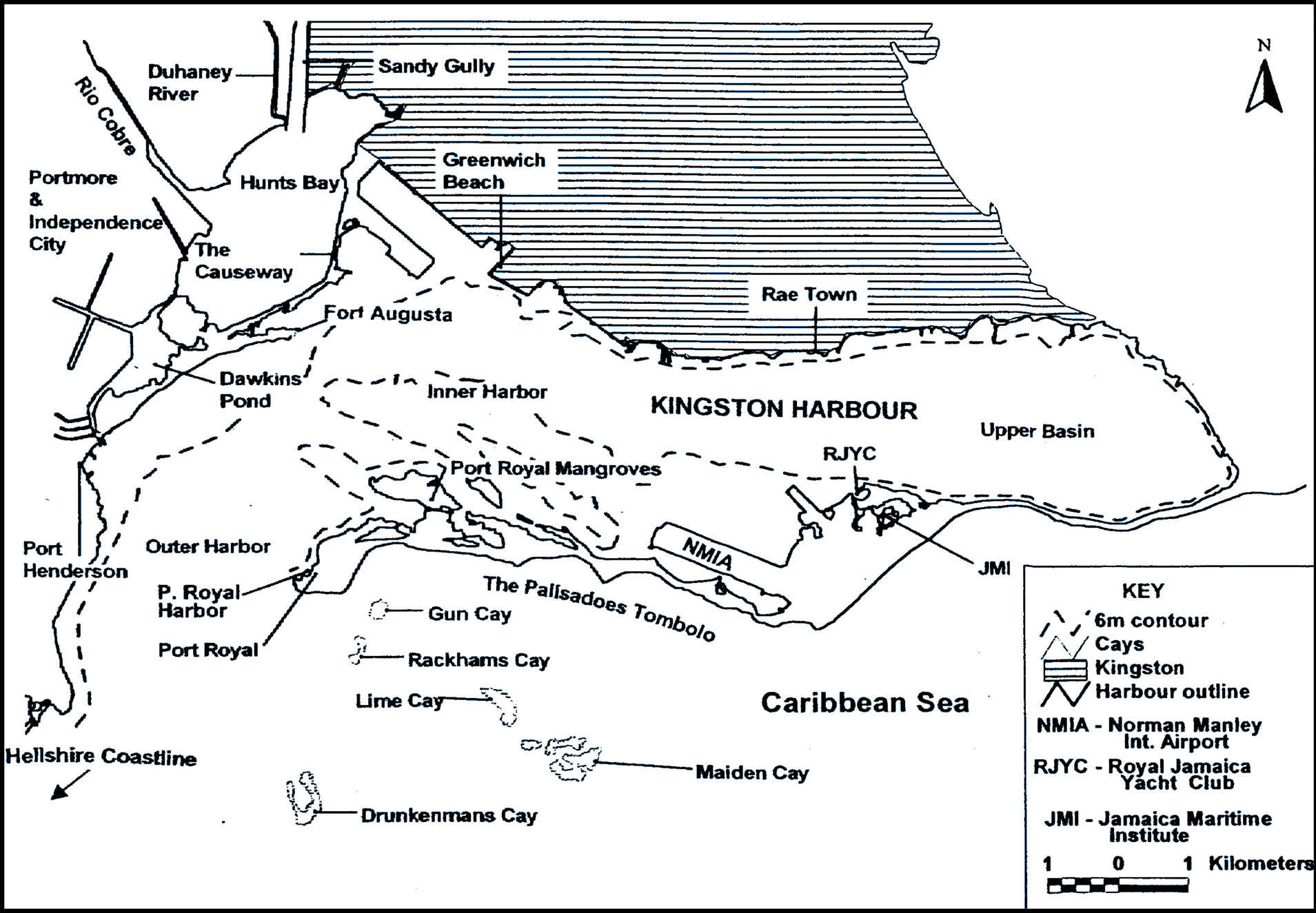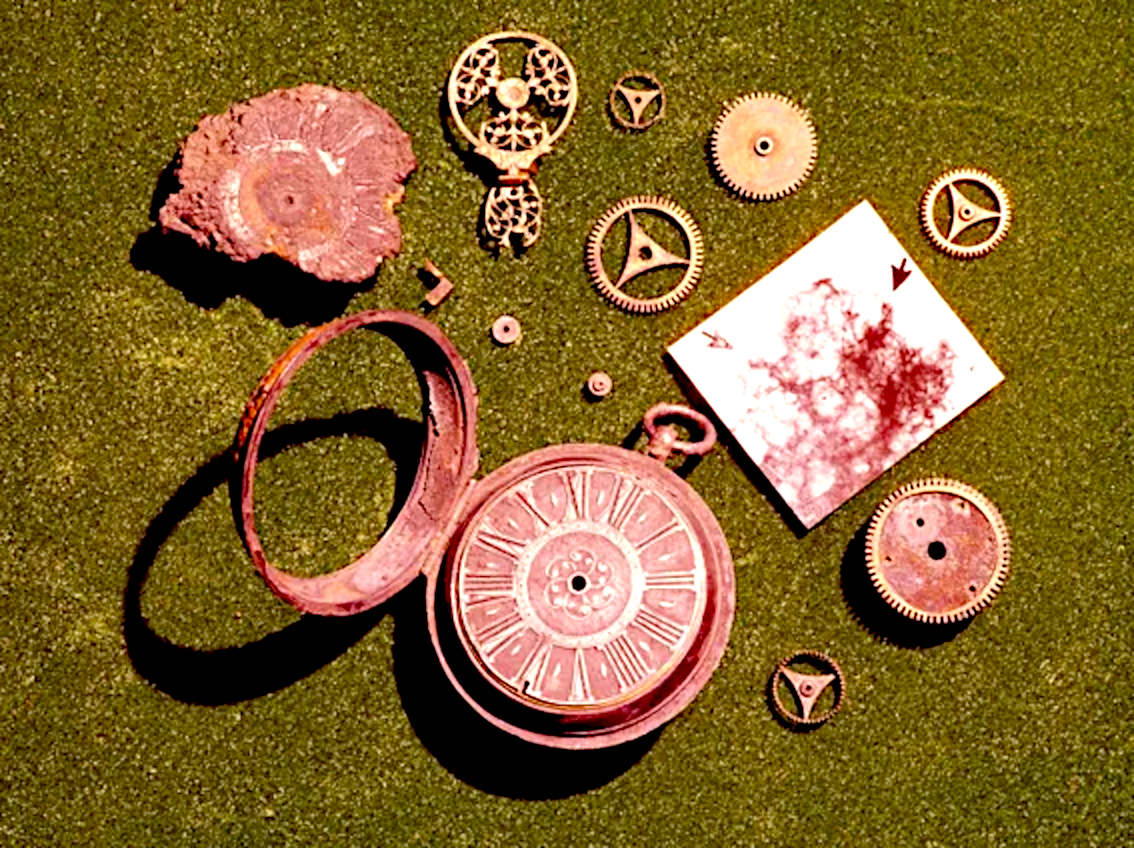|
1965-68 ROBERT MARX @ PORT ROYAL
Please use our A-Z INDEX to navigate this site or see HOME
|
Robert Marx, an ex-marine and experienced scuba diver, became fascinated about Port Royal, the “sunken city” when he was just a young teen (Marx 3). Marx probably had the most in depth excavation, and discovered the most artifacts. His excavation included the use of aerial photography, air lift compressors, underwater metal detectors, buoys, and he created charts and grids of the sites (Marx 112). Excavating in these underwater conditions however did provide challenges for Marx and his team; sharks would get uncomfortably close, sediment had piled up over remains throughout years of disturbances and tides, visibility underwater was poor, and constant hours of scuba diving takes a toll on the body (113-128). Despite these difficulties, Marx uncovered a tombstone, an iron gun, muskets, cannon balls, shoes, axes, a workbench, gold wedding bands, a chinese porcelain figurine, a pocket watch, even some human bones, and hundreds of silver coins, liquor bottles, and bricks (220-230).
Also, to his suprise, Marx discovered pieces of obsidian used in spanish pottery dating to the period of two Columbus wrecks; Capitana and the Santiago and Spanish coins dating from the later 1600s (258). These dates were confirmed by thermoluminescence and carbon-14 dating (277). Unfortunately from Marx’s account, the Jamaican government kept most of the artifacts for “safekeeping” but took care of them poorly, in which Marx believed was because the Jamaican government was more interested in the publicity of the lost city and its treasures than actual historical and archaeological significance (265). To Marx’s dismay, many of the artifacts were put on display in the Port Royal Museum, which was broken into and almost everything was stolen; most likely being sold off to tourists (289).
Port
Royal, Jamaica
A
diver using SCUBA gear to explore Port Royal. The most extensive excavations in terms of pure volume were carried out by Robert Marx (1967Marx, 1973), who used dredging techniques that were by today's standards extremely crude and brutal to the site. Noteworthy among the contributions of more-refined studies of the site (on land and in the water) are the work of Philip Mayes (1972;Mayes and Mayes, 1972) The studies by Hamilton and his students represent an important shift in methodological and technical expertise, with resulting reports providing some of the most refined details in material and spatial analysis for the region (Hamilton, 1986 1988(Hamilton, , 2006) (Hamilton and Woodward, 1984). Reports and publications from the studies conducted by the Institute for Nautical Archaeology at Texas A&M University (INA) resulted in details on material use and social interaction in this important eighteenth-century port town (Brown, 1996;Darrington, 1994;Dewolf, 1998;Fox, 1998;Franklin, 1992;Gotelipe-Miller, 1990;Hailey, 1994;Heidtke, 1992;McClenaghan, 1988;Smith, 1995;Trussel, 2004; see also Downing and Harris [1982] for underwater studies of Bermuda and Leshikar-Denton [1991] for studies of the Cayman Islands).
Captain Sir Henry Morgan was a pirate, and privateer, ending up as the Governor of Jamaica. He was buried at Palisadoes Cemetery, then Port Royal was washed into the Caribbean Sea, the result of an earthquake and tsunami in 1692. Not to be seen again for 300 years.
UNDERWATER
ARCHAEOLOGY EXCAVATION IN PORT ROYAL
1960:
Norman Scott explored Fort Carlisle.
1969 - 1970: Philip Mayes Excavation. Mayes was hired by the Jamaican National Trust Commission to continue research. Mayes is accredited with uncovering St. Paul’s Church of Port Royal, the largest building of the 17th century city.
Port Royal mangroves: Hurricane Refuge lagoon, Fort Rocky lagoon and Cemetery lagoon.
An
earthquake in the Caribbean
struck Port Royal, Jamaica, on
the 7th of June 1692. A stopped pocket watch found in the harbor during a 1959 excavation
conducted by Edwin
Link and his wife Marion, indicated that the resultant tsunami occurred around 11:43 AM local time.
|
Port Royal is a contender for World Heritage Site listing to become a landmark or area with legal protection by an international convention administered by the United Nations Educational, Scientific and Cultural Organization (UNESCO). World Heritage Sites are designated by UNESCO for having cultural, historical, scientific or other form of significance.
|
|
A timepiece was recovered from the sands at old Port Royal, with the exact moment recorded, when the wearer was taken by the tsunami, as being 11:43 on the 7th June 1692.
LINKS & REFERENCE
http://www
|
|
Please use our A-Z INDEX to navigate this site, or return HOME
|
|
This website is Copyright © 2022 Cleaner Ocean Foundation & Jameson Hunter - All rights reserved
|
